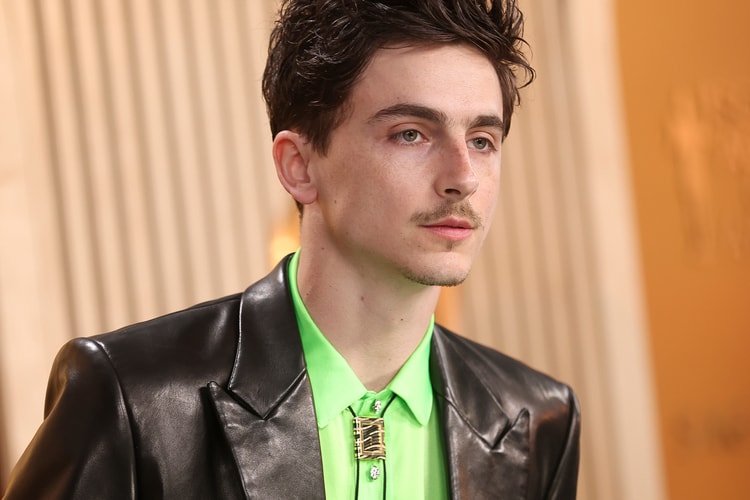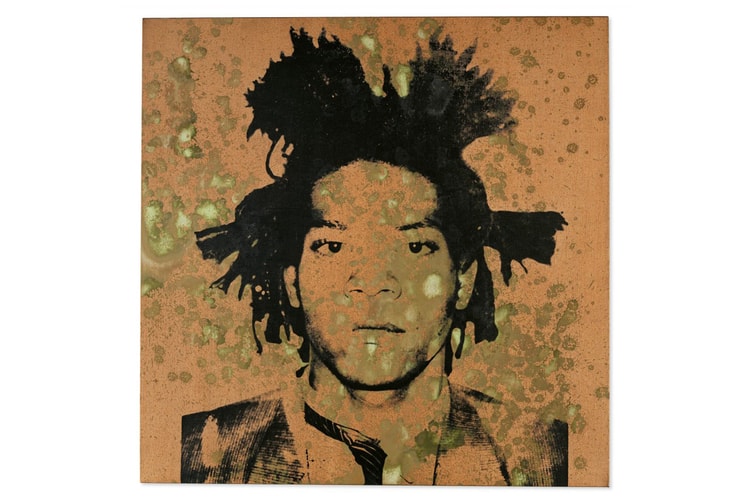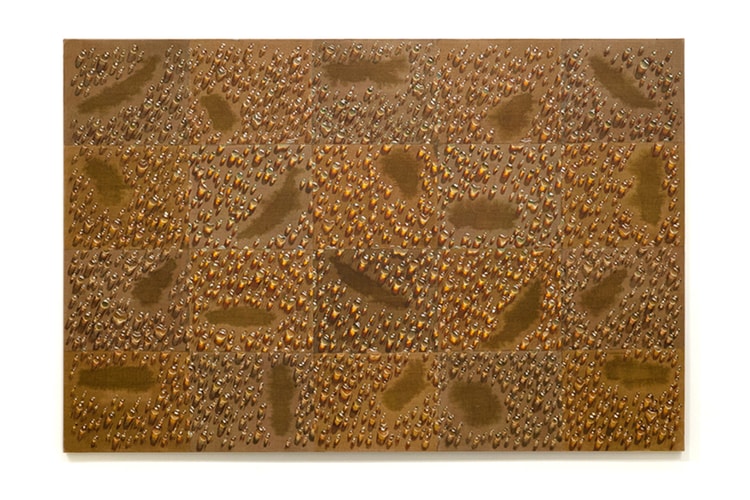ICONS: The Cartier Tank
From battlefield to red carpet, the ultimate dress watch is never out of place.
ICONS: The Cartier Tank
From battlefield to red carpet, the ultimate dress watch is never out of place.
Some watches have their moment in the spotlight, but some are still fresh decades later. As part of the ICONS series, HYPEBEAST looks into the continued relevance and significance of these cornerstones of watch collecting.
While the Cartier Tank might have set the gold standard for every dress watch that has followed it, the inspiration behind Cartier’s most famous horological creation is anything but glamorous.
Louis Cartier, the grandson of Cartier’s founder Louis-François Cartier, served as an auxiliary driver during WWI and designed the Tank in 1917 as a tribute to the allied forces.
The story goes that Cartier created a simple line drawing after seeing a photograph of the new Renault FT tanks in a newspaper, using the dial to represent the body of the tank with its signature “brancard” flanks representing the caterpillar tracks.
The tank was a creation of the allied forces, the invention of the British Royal Navy, who christened their revolutionary vehicle the “landship”, before realising that enemy spies would quickly deduce the purpose behind that name and selecting the more oblique name, tank.
Cartier would later flesh out the sketch using the same design language he had used to create earlier watches, namely a “Chemin de fer” railway minute track, Roman numerals and a beaded winding crown set with a cabochon-cut sapphire.
But the creation wasn’t solely Cartier’s, movement designer Edmond Jaeger designed its mechanism which was then made in Switzerland by LeCoultre many years before Jaeger and LeCoultre became Jaeger-LeCoultre in 1937.
The partnership between Cartier and Jaeger was formalized with the foundation of the European Watch and Clock company in November 1919, shortly after the first batch of Tank watches were finished. However the scale of Cartier’s watchmaking was very different from that of today, that first run of Tank watches consisted of just six handmade pieces, followed in 1920 by a further 33 pieces.
Louis had already established Cartier as one of the first makers of wristwatches fifteen years earlier after his friend, the Brazilian aviator Alberto Santos-Dumont, mentioned the difficulty of using a pocket watch while trying to fly his plane. Louis developed the Santos-Dumont, a watch which not only solved his friend’s problem, but proved so popular that it is still part of Cartier’s collection more than a century later.
Louis and his brothers Pierre and Jacques were the generation responsible for growing the family business beyond its Parisian roots and putting the Cartier name on a world stage, something cemented in history when King Edward VII called Cartier “the jeweller of kings and the king of jewellers” referencing the number of Royal warrants held by the business.
While Louis ran the company from Paris, Jacques set up in London and Pierre headed to New York to crack the all-important American market – buying its Fifth Ave headquarters for $100 USD and a legendary double string of pearls, then valued at $1m USD.
Cartier moved quickly to expand its Tank offering, adding a number of variations on the central theme including the Tank Cintrée – French for “arched” – which describes the elongated, curved case that wraps around the wrist, while the rectangular Tank LC introduced the proportions most closely associated with the Tank today.
Other rarities include the Tank Chinoise, another square Tank with crossbars, inspired by traditional Chinese architecture, above and below the dial and the Tank Basculante, a watch that can rotate within a pivoted frame, which was introduced in 1932 as an answer to LeCoultre’s Reverso. The original square-cased Tank would eventually become known as the Tank Normale.
The Tank Guichets stretched the Tank model furthest of all in 1928, doing away with a traditional dial and replacing it with a minute wheel and jumping hour ring hidden behind a solid gold face, revealing the time through two openings or “guichets.” The design was decades – almost a century – ahead of its time, something illustrated by the recent success of the Gucci Grip, which uses a very similar design.
While these watches did little to add to Cartier’s balance sheet at the time, today they do make an attractive focus for collectors, offering plenty of variety and low production numbers, with vintage Cartier expert Harry Fane estimating that between its creation in 1919 and 1965, Cartier made just 2,200 Tanks.
Cartier’s fortunes throughout the first half of the 20th Century were largely dictated by major global events and, just as the Tank had attracted enough interest to sell more than 100 pieces a year, the Wall Street Crash of 1929 saw demand fall away to almost nothing. The company was then fractured by WWII, which saw its HQ in Paris separated from its London and New York offices, both of which had to be sold-off after the war to shore up the main business.
Cartier wouldn’t sell more than 100 pieces of the Tank annually again until the 1960s, when the brand began to regain some of its allure. Although still splintered, Cartier was on the road to recovery and the Tank was to play a central role in rebuilding the business.
In the late 1960s Robert Hocq, the owner of French cigarette lighter company Silver Match, wanted to go head-to-head with market leaders Dunhill and DuPont and approached Cartier for a license, so that his latest design could be marketed as a Cartier product. The lighter became the biggest accessory of the decade and allowed Hocq to lead a consortium – which included Richemont precursor, the Rembrandt Group – to buy the US arm of Cartier.
As well as relaunching the Tank with ultra flat, LC and Normale models in 1973, which found its way on to the wrists of Andy Warhol, Jacqueline Kennedy and Catherine Deneuve, the company set about creating a wholesale line of affordable licensed accessories called “Le Must de Cartier” to generate income without tarnishing Cartier’s reputation as a fine jeweler.
Scarves, sunglasses and lighters came first in 1973, followed in 1976 by a huge assortment of vermeil (gold-plated silver) Must de Cartier quartz-powered Tanks, which took their inspiration from earlier gold-plated Tanks released by Cartier Inc.
By the end of the 70s, the group had bought back both the Paris and London arms of Cartier and regrouped the business under the Cartier World holding company. By the mid-1980s the Must de Cartier line accounted for 60% of the brand’s then annual $1bn USD revenue, providing the wider group with the kind of capital it needed to expand its retail arm and begin a series of acquisitions including Baume et Mercier and Piaget.
In 1998, the South African Rupert family, who were behind both the Rembrandt Group and its successor, the Vendôme Luxury Group, acquired the final minority shareholdings in Cartier, and installed it as the centrepiece of its Richemont group, which today owns 11 watchmaking brands including A. Lange & Söhne, Jaeger-LeCoultre and Vacheron Constantin.
According to Forbes, Richemont turned over $13.8bn USD in 2020, of which $6.2bn USD came from Cartier.
Under Richemont ownership Cartier grew the Tank collection thorough the first decade of the 21st Century, introducing an “Allies” trio of Tank models including the Américaine, Française and Anglaise, in tribute to the inspiration behind the first Tank watches.
Always keen to build on past successes, Cartier revived the Must de Cartier name earlier this year as a new entry point to the Tank collection with a mix of stainless steel automatics and a trio of colorful quartz pieces, demonstrating that the same kind of pragmatism and ingenuity that rebuilt Cartier in the 70s and 80s is still alive and well.


















